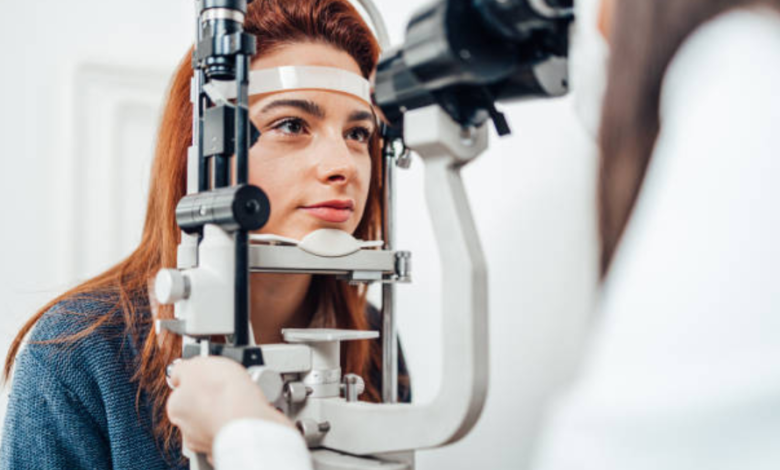Correcting Distorted Vision: Specialized Contact Lenses

Keratoconus creates unique challenges for patients seeking clear vision. The progressive condition causes the cornea to thin and bulge into an irregular cone shape, leading to distorted vision that standard glasses and soft contact lenses simply cannot correct effectively. Specialized contact lenses have emerged as the primary non-surgical treatment option, offering hope for those experiencing the frustrating symptoms of this condition.
For individuals dealing with corneal irregularities, finding effective vision correction can feel overwhelming. Reseda keratoconus patients often discover that conventional eyewear falls short of providing the visual clarity they need for daily activities. The irregular corneal surface scatters light in unpredictable ways, creating multiple focal points that make standard correction methods inadequate. This is where specialized contact lenses prove their worth as a game-changing solution.
Understanding How Specialized Lenses Work
Rigid Gas Permeable Technology: These lenses create a smooth optical surface over the irregular cornea, effectively masking the distortions caused by keratoconus. The tear film between the lens and cornea fills in the irregular areas, creating a uniform refractive surface. RGP lenses maintain their shape on the eye, providing consistent visual acuity that remains stable throughout the day.
The science behind this correction method is straightforward yet effective. When light enters the eye through a specialized lens, it focuses properly on the retina instead of scattering across multiple points. This focused light creates the sharp, clear vision that patients have been missing. The process requires precise fitting and customization to ensure optimal comfort and visual outcomes.
Types of Specialized Contact Lenses
Scleral Lens Design: These large-diameter lenses vault over the entire cornea, resting on the white part of the eye called the sclera. The design creates a fluid-filled chamber between the lens and cornea, providing exceptional comfort for patients with advanced keratoconus. Scleral lenses offer stable vision and can be worn for extended periods without the discomfort often associated with smaller rigid lenses.
Hybrid Lens Construction: Combining a rigid center with a soft outer skirt, hybrid lenses attempt to provide the visual clarity of RGP lenses with improved comfort. The rigid center corrects the irregular astigmatism while the soft periphery enhances lens stability and comfort. These lenses work well for patients who struggle with the comfort of traditional rigid lenses but need superior visual correction.
Mini-Scleral Options: Sitting between traditional RGP and full scleral lenses in size, mini-scleral lenses offer a compromise for patients seeking better comfort than RGP lenses without the bulk of full scleral designs. They provide excellent visual outcomes while being easier to handle and insert than their larger counterparts. The moderate size makes them suitable for patients with mild to moderate keratoconus progression.
See also: Pond Cleaning in London: Expert Solutions for a Healthy and Beautiful Pond
Benefits and Patient Outcomes
Visual Clarity Improvements: Patients often experience dramatic improvements in visual acuity, with many achieving 20/20 vision or better when properly fitted with specialized lenses. The correction goes beyond simple sharpness, addressing issues like glare sensitivity, halos around lights, and double vision that plague keratoconus patients. Daily activities like driving at night become possible again, significantly improving quality of life.
Comfort and Wearability: Modern lens materials and fitting techniques have greatly improved comfort levels compared to earlier generations of specialty lenses. Patients can typically wear their lenses for 12-16 hours daily once properly adapted. The key lies in proper fitting and gradual adaptation periods that allow the eye to adjust to the new sensation.
Key advantages include:
- Stable vision throughout the day without fluctuations
- Reduced light sensitivity and glare issues
- Improved depth perception and contrast sensitivity
- Protection of the corneal surface from further damage
- Delayed need for surgical interventions in many cases
Fitting Process and Customization
Advanced Measurement Techniques: Eye care professionals use sophisticated technology like corneal topography to map the exact shape and irregularities of each cornea. This detailed mapping allows for precise lens design that accommodates the unique characteristics of each patient’s condition. The fitting process often requires multiple appointments and trial lenses to achieve optimal results.
Trial and Adjustment Period: Most patients need time to adapt to specialized lenses, with the adjustment period varying based on lens type and individual tolerance. Regular follow-up appointments ensure proper fit and allow for modifications as needed. The investment in proper fitting pays dividends in long-term comfort and visual success.
Managing Expectations and Long-term Success
Realistic Timeline for Adaptation: While some patients experience immediate improvement, others may need several weeks to fully adapt to their new lenses. The brain needs time to adjust to the corrected vision, especially if the patient has been dealing with distorted vision for an extended period. Patience during this adjustment phase is crucial for long-term success.
Maintenance and Care Requirements: Specialized lenses require specific cleaning and storage protocols to maintain their effectiveness and prevent complications. Proper care extends lens life and prevents infections or other complications that could interrupt treatment. Most patients find the care routine becomes second nature within a few weeks of starting treatment.
Conclusion
Specialized contact lenses represent the most effective non-surgical treatment for keratoconus and other corneal irregularities, offering patients the chance to regain clear, stable vision. The technology continues to advance, providing more comfortable options with better visual outcomes than ever before. With proper fitting and care, these lenses can dramatically improve quality of life for those struggling with distorted vision. Don’t let corneal irregularities limit your daily activities – schedule a consultation with an eye care professional experienced in specialty lens fitting to explore your treatment options.




